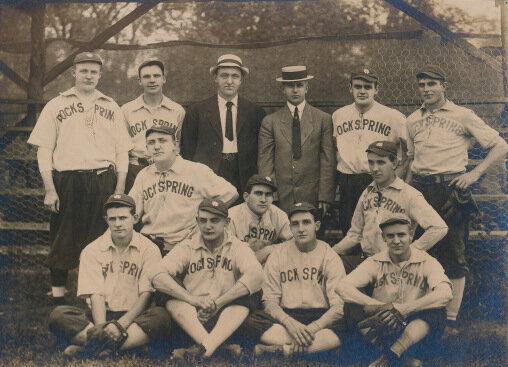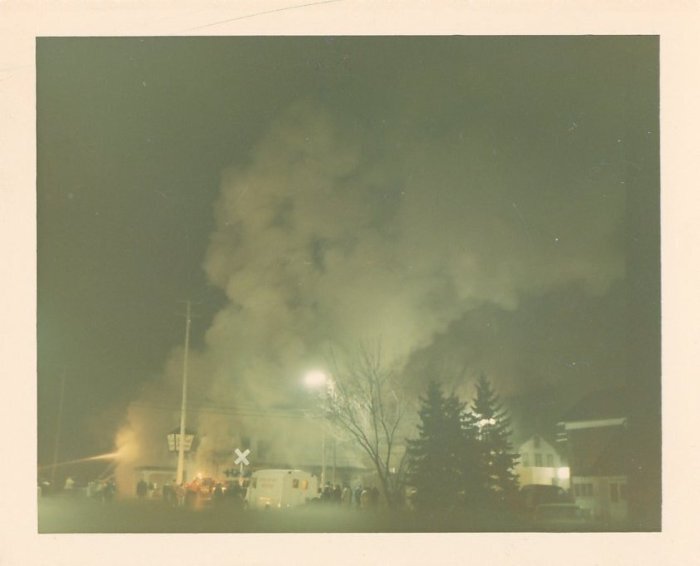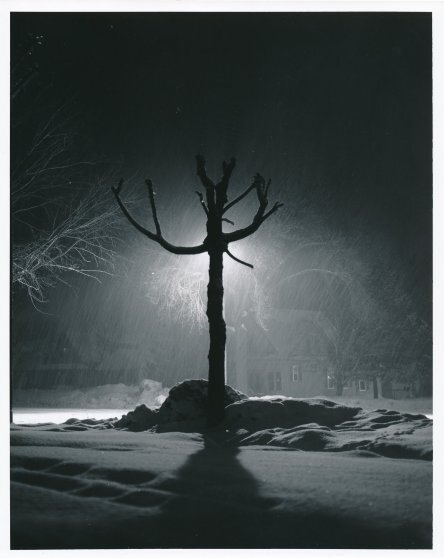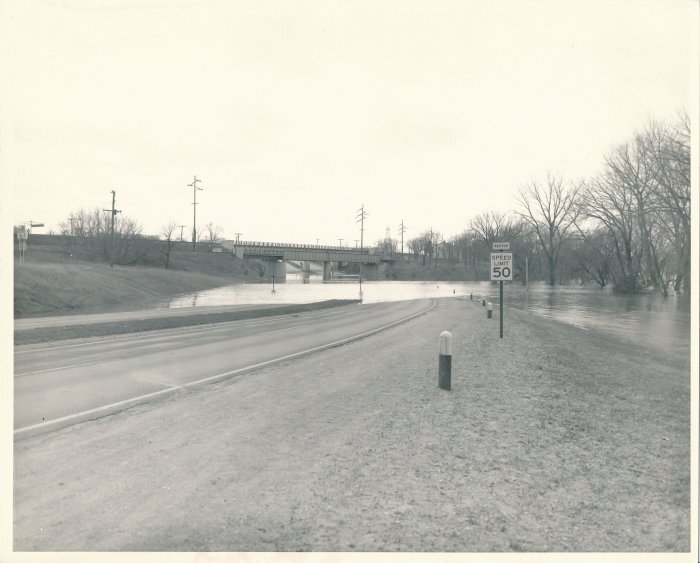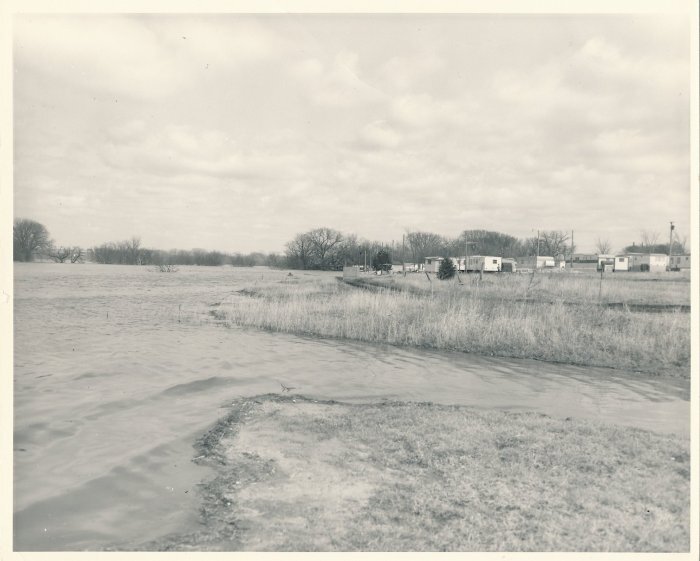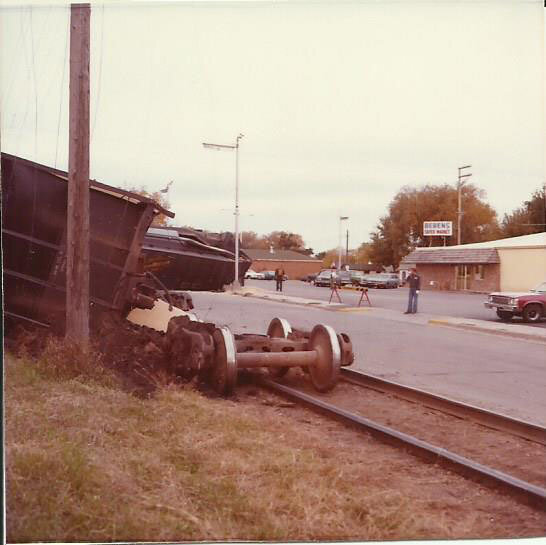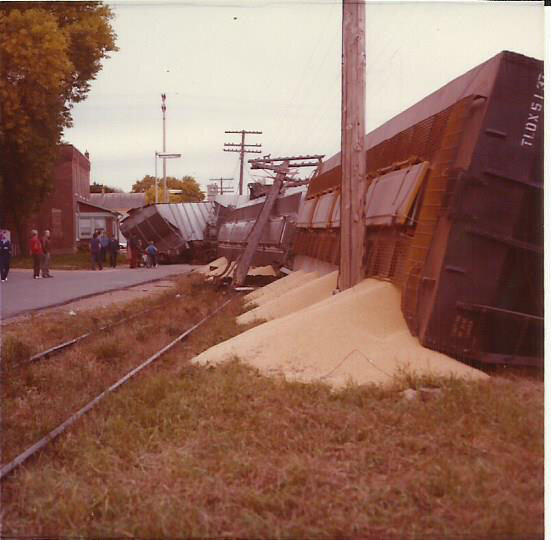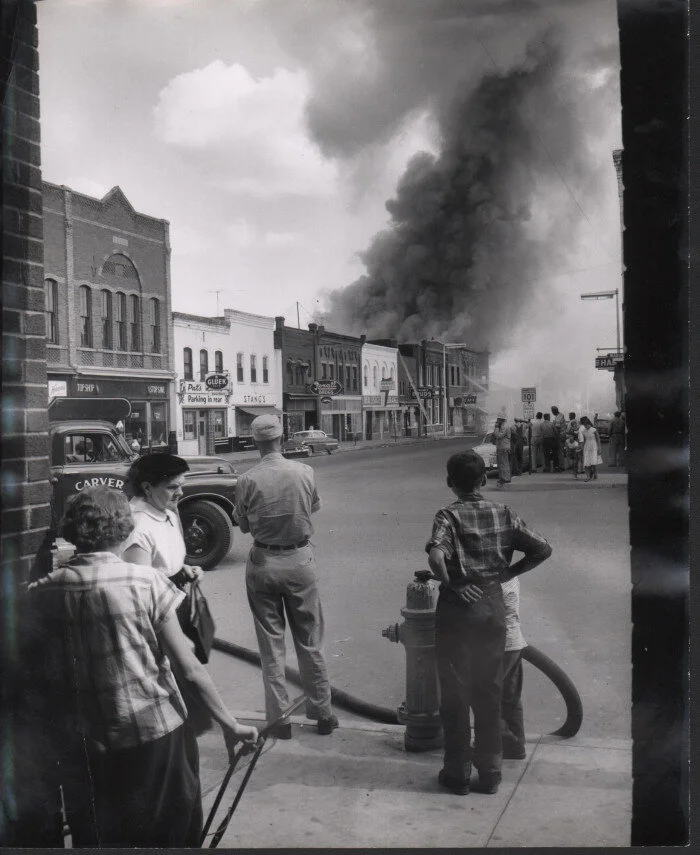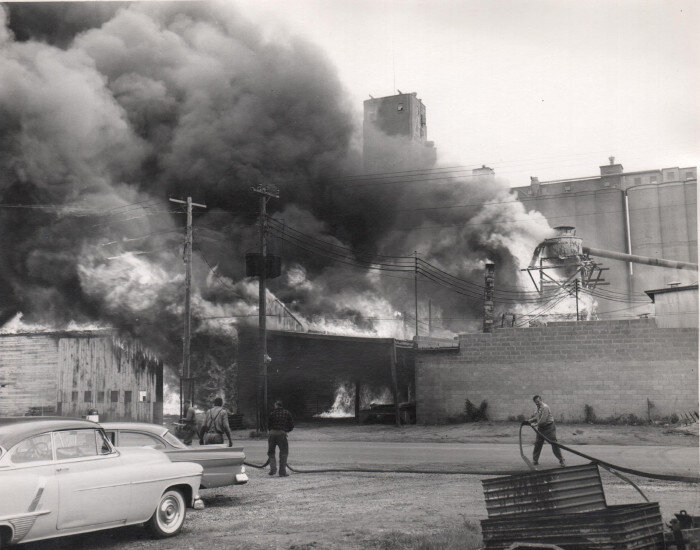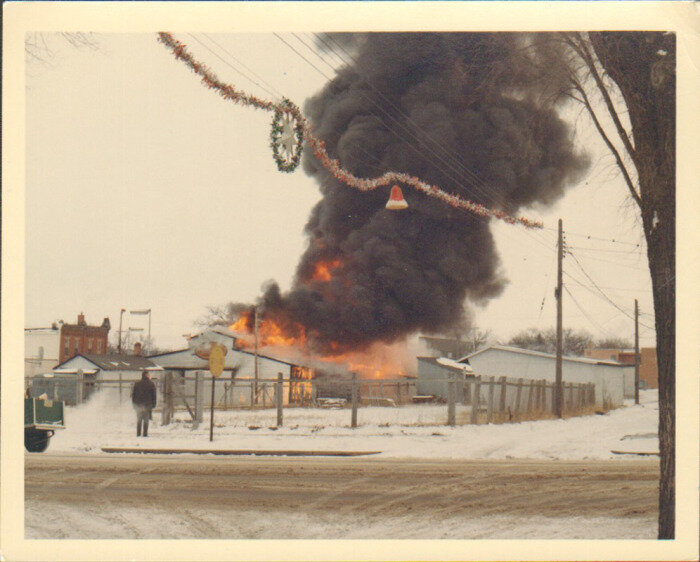Downtown Lydia around 1970. Photo from the SCHS Collections.
The history of Lydia has been shaped by fire, specifically two disastrous blazes, one in 1901, and one in 1933.
The 1901 Lydia fire has been described as “one of the most disastrous fires in the history of the county”. It occurred in the middle of the night, sometime between midnight and one, and the causes are still unknown. The blaze began at the Ludke Brothers Store, formerly owned by F. J. Vogel.
An article published at the time described the scale of the fire: “The flames when discovered were already beyond the controllable stage, even with a well equipped apparatus. Such an apparatus is wholly lacking in Lydia and the neighbors who came to the scene had no better means of combating the fiery element then buckets and wet blankets”. It continued, “Not a thing was saved except the books, and the boys consider themselves very fortunate at being able to snatch them from the flames. The residence, which was attached to the store building, was also destroyed along with every article of furniture and clothing it contained”
Losing one of the town’s general stores would have been a challenge for the small community, but that was unfortunately not the extent of the fire. “The blacksmith shop, operated by Adolph Wandschnieder went up and the smithy building belonging to Chris Busse. Also destroyed were John Ries refreshment stand and 600 lbs of butter and 50 cases of eggs...Busse’s house caught fire, but was saved. Miller Bros’ store was also in jeopardy, as the wind bore towards it. The heat was so intense that it burst the glass in front of the store. Wet blankets saved it... Were it not for the good wells of Lydia it is hard to imagine what the damage would have been”
Store owner Frank Ludke almost died in the blaze. He went into the store to try to save some of the records, and passed out due to smoke inhalation. Luckily firefighters were able to pull him out. Rather than rebuilding, after the fire the Ludke brothers moved to Montana where they started a hotel that catered to traveling miners.
A second fire started in 1933. This one was equally devastating to the town, destroying a restaurant, the barber, a garage, and Gerlich’s Harness Shop & Dance Hall. The timing, during the Great Depression, was not fortuitous. Many of the business owners did not have the cash on hand to recover. Of these businesses, only the garage was rebuilt after the blaze.








